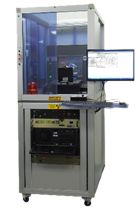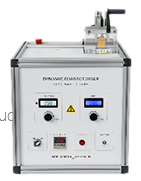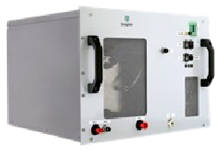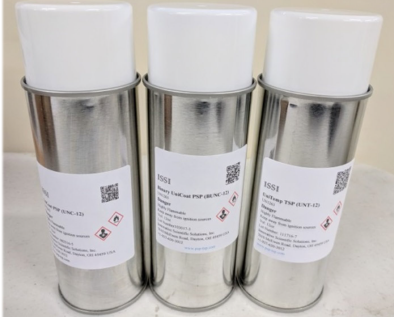上海埃飞科技
Worldwide Technology(S. H)上海埃飞科技
Worldwide Technology(S. H)产品展示




Pressure sensitive paint

Pressure sensitive paint (PSP) is an optical sensor used for surface pressure measurement.
Pressure sensitive paint (PSP) is an optical sensor used for surface pressure measurement. Traditional techniques for measuring surface pressure on models are limited to point measurements and geometric shapes that have enough space to install them. Due to processing requirements and the sensor itself, the installation and inspection of models with pressure taps and sensors are usually expensive. PSP is not limited by model geometry. It can measure the pressure on the surface of the model at every visible point with excellent spatial resolution. Just like paint coating, use the HVLP paint gun or spray gun to apply the PSP to the surface.
PSP is most often used in wind tunnel studies as a verification tool for computational fluid dynamics (CFD) models of certain flow conditions on aircraft models. Wind tunnels ranging from small academic low-speed wind tunnels to large-scale transonic research wind tunnels and hypersonic wind tunnels have been using PSP for model testing and verification for more than 20 years. Today, PSP is still a valuable resource for government and commercial testing airplanes, helicopters, automobiles, high-speed trains, bridges and building models and their components. PSP is also used as a tool for film cooling efficiency measurement in gas turbine blade design.
A typical PSP consists of oxygen-sensitive fluorescent molecules embedded in an oxygen-permeable adhesive. The PSP method is based on the sensitivity of certain luminescent molecules to oxygen. After coating, the PSP is excited by a high-intensity LED (usually a UV 400 nm light source). When the light-emitting molecule in the PSP absorbs a photon from the LED, it will transform into an excited singlet energy state. The molecule then returns to its ground state by emitting longer wavelength (red-shifted) photons. When oxygen can interact with molecules, the transition to the ground state is non-radiative. This process is called oxygen quenching. The rate at which these two processes compete depends on the partial pressure of oxygen on the surface of the PSP. The higher oxygen quenching rate results in lower light intensity emitted from the PSP layer. Conversely, a lower oxygen quenching rate results in a higher emitted light intensity. The result is based on the output of the model surface with varying intensity based on the local oxygen concentration, which is directly related to the local air pressure. The output of the PSP is recorded with a sensitive scientific camera through a long pass filter that separates the LED excitation from the PSP emission.
After taking an image with the camera, store it for post-processing. Using a pre-determined calibration of the same paint type, the image can be converted from an intensity change image to a pressure image. From there, a pseudo-color map is used to better visualize the pressure gradient on the surface of the model. The data can be plotted and compared with the pressure tap (if available). A typical PSP test is within 5% of the pressure data.
(Product ID: UNC-12)
UniCoat is a single photoluminescence pressure sensitive paint (PSP) packaged in an aerosol can, which is easy to use. UniCoat has slightly higher temperature sensitivity and slightly lower pressure sensitivity than UniFIB PSP, but compared to other products, it is a simple shaking and spraying application, and has a lower cost, which is very suitable for academic use. This single-layer coating can be directly applied to most materials. UniCoat is an effective quantitative PSP, which is very suitable for isothermal environments (large metal models and temperature-controlled tunnels) or environments with large pressure changes (transonic and supersonic flow).
The main source of errors in the PSP data is caused by changes in light and temperature during the data collection period when the wind tunnel is running. Exhaust-type wind tunnels will change the temperature during operation, while the temperature of closed-circuit or continuous wind tunnels will be more stable. The pressure measurement error at low wind speeds is mainly the result of the temperature gradient on the surface of the model. These temperature gradients may be the result of model construction, tunnel operation or fluid dynamics. For example, use internal metal structures and polymer resins to build rapid prototype models. When the surface of the model is subjected to heat flux, the thermal characteristics of the internal structure are obvious. Due to the change of the tunnel Mach number, the model is exposed to heat flow. This situation is most obvious during the start of the tunnel. By using temperature-controlled channels and building models with materials with high thermal conductivity (such as aluminum or stainless steel), temperature errors can be minimized. Model construction and tunnel operation are key considerations for effective low-speed PSP measurement. The unstable output of the LED and the vibration of the model or camera relative to each other may cause lighting changes. For the camera, these changes are interpreted as pressure changes.
One way to deal with temperature errors is to add a second component to the PSP. This is the binary PSP. Binary PSP added that what single-component PSP lacks is the ability to correct for errors caused by temperature and light. Binary PSP works by acquiring data from the oxygen-sensitive component and the second component (called the reference molecule). The emission spectra of the reference molecule and the oxygen-sensitive molecule are independent of each other. The color camera is used to separate the signal from the reference and oxygen sensitive components of the Binary PSP. Thus, two images (one of the reference images and one of the oxygen sensitive components) are acquired. Taking the ratio of the oxygen-sensitive image to the reference image eliminates the dependence on temperature. This is because the reference molecule and the oxygen sensitive molecule have the same sensitivity to temperature. By reducing the temperature dependence, an ideal PSP can be created, where the only dependence depends on pressure changes.
Pressure sensitivity
0.8% per kPa
Pressure range
0-kPa to 200-kPa
Temperature sensitivity
0.4% per ° C
Temperature range
0 ° C to 50 ° C
The reaction time
300 ms
excitation
380-nm to 520-nm (400-nm ideal)
launch
620-nm to 750-nm
Photodegradation rate
1% per hour (Excitation)
Shelf life
12-months
filter
610-nm
因用于机器人各方面应用且与大多数机器人类型兼容,AutoCal系统可以检测出机器人自身构造和工具中心点(TCP)的 突然改变或偏离,并且该系统无需人为干涉就自动地更正这些误差。
AutoCal系统-Dynalog的先进水平校准技术,Dynalog是机器人单元标定技术的世界领导者。它的主流产品DynaCal 系统,被应用于离线的机器人单元校准,并作为最精确的和技术先进的机器人校准程序为许多机器人制造商和终端使用者所接受。AutoCal 系统将已证实的DynaCal校准技术结合到一个在线的全自动系统中,该系统专为程序控制和复原而设计的,价格低廉。
AutoCal系统提供在线的机器人校准方案,旨在快速和自动地保证机械设备的工作性能。因用于机器人各方面应用且与大多数机器人类型兼容,AutoCal系统可以检测出机器人自身构造和工具中心点(TCP)的 突然改变或偏离,并且该系统无需人为干涉就自动地更正这些误差。这意味着不用猜测哪里会出错,不用浪费宝贵时间在机器人程序重复校准上,产品品质无任何损失。
AutoCal系统-Dynalog的先进水平校准技术,Dynalog是机器人单元标定技术的世界领导者。它的主流产品DynaCal 系统,被应用于离线的机器人单元校准,并作为最精确的和技术先进的机器人校准程序为许多机器人制造商和终端使用者所接受。AutoCal 系统将已证实的DynaCal校准技术结合到一个在线的全自动系统中,该系统专为程序控制和复原而设计的,价格低廉。